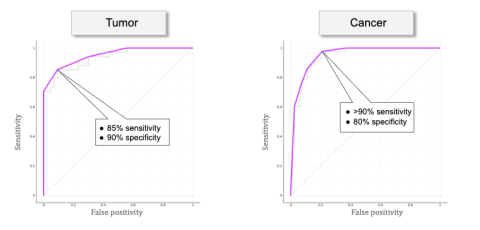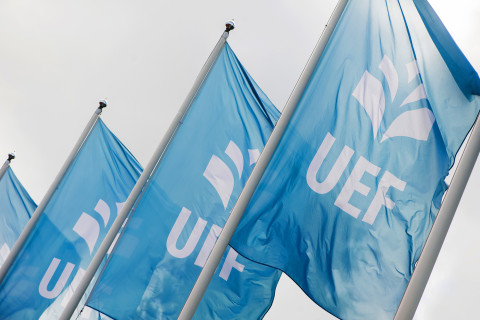A multidisciplinary research project between the Faculty of Veterinary Medicine at the University of Helsinki, the WiseNose association, Aqsens Health Oy, and the University of Eastern Finland is bringing forward the strengths of co-innovation. The parties are now publishing their first results, showing how totally different methods supported each other and enabled the researchers to find canine mammary cancer markers from the urine of dogs suffering from the mammary cancer, which is dogs’ equivalent to breast cancer.
Compared to laboratory rodents the researchers at the University of Helsinki knew that they had a far better cohort to study. Pet dogs suffer spontaneously from the similar kind of breast cancer as humans and as they live in the same environment as humans, many of the confounding factors can be mitigated. “Compared to mice and rats that have to be genetically modified or surgically induced so that they “get” cancer, the dogs just get them, just like we do. Pet dogs also breath the same air, drink the same water, take walks in the same environments, live with the same molds, radiation load, toxins etc. as we do, and they even eat our leftovers. The mice and rats live in very sterile cages and eat the same chow all their lives. These differences make pet dogs excellent disease models compared to rodents” says assistant professor Anna Hielm-Björkman, the research director of the study and the leader of the DogRisk research group.
Having a background in gathering big data sets and clustering results to find the active metabolic pathways that associate with diseases, the researchers saw a potential in partnering up with others that had know-how that they did not have without the collaboration. All together they built a study where the strengths of the parties were combined - the clinical expertise from the Faculty of Veterinary Medicine at the University of Helsinki, the best cancer scent dogs and their handlers from WiseNose, the best knowledge in a multitude of chemical analyses from the University of Eastern Finland, and the novel E-TRF method with their expertise in big data mining from Aqsens Health Oy. The samples that have been used are urine samples from 135 dogs of different breeds, ages and sex and where ⅓ were healthy controls, ⅓ had benign tumours and ⅓ had malign cancers, all diagnosed by pathology. The samples were first screened by the dogs and then by the E-TRF method. The University of eastern Finland has now also analysed all the same samples using three methods; LC-MS, NMR and trace-element analysis.
Based on parallel tests, qualifying measurements and analyses since April 2019, the parties have discovered that indicators of a dogs’ mammary cancer, benign or malign, can be found in their urine. Innovative tests combined from validated scent dogs, the E-TRF method, mass spectrometry, NMR, and trace-element analyses have delivered results which are novel and that will be especially helpful in developing methods, and possibly individual tests, for early stage non-invasive screening of diseases. After a successful 24 sample pilot where the E-TRF was able to correctly cluster 8/24 of the samples as healthy, 8/24 as having a benign mammary tumour, and 8/24 as having a malign mammary cancer they have now been able to repeat the results with the 135 dogs’ urine samples. “This is a groundbreaking, with a sensitivity of over 95%, we still have a specificity of over 80%” says Hielm-Björkman. The ROC-curves below come from the early results that the parties now are sharing as first results of their collaborative research work.
In the project parties could classify samples in three categories - healthy, tumours and cancers - and in addition presentative ROC curves with high sensitivity and specificity (above). Even though the amount of the samples was still small, performed tests and measurement laid a foundation for further studies and scientific publications. As the collaborative research project is still ongoing, parties will reveal more information on the measurements, results and key findings in their forthcoming article.
“In our newly established test track, which is right now under the accreditation process, we performed several double blind test runs using our best performing cancer scent dogs. Results were stunning and eg. hit rate for detecting cancer was almost 100% in comparison with the clinical tests. We also diluted samples several times, spiked some additional molecules for finding the limitations of dogs’ scent and to further understand their capabilities but also to give more information to the analytical work performed by Aqsens Health and University of Eastern Finland. I can sense that we are on the path to detect even individual molecules or other indicators for cancers”, says Susanne Paavilainen Managing Director of the Wisenose association.
“We are really excited about the first results and on the capability to deliver high quality analysis as our ROC curves demonstrate. Furthermore we are excited about the cross science working model, which is significantly speeding up our mission on detecting cancers and other diseases from non-invasive samples on humans. Having both scent dogs and high level scientific measurement capabilities participating this project will help us fine tune our own semispecific E-TRF method to find indicators for cancers and other diseases having major impact globally, both socially and economically”, says Timo Teimonen CEO of Aqsens Health.
“I have hardly ever witnessed as promising results as we have reached in this collaboration project and within this short period of time”, says Professor Jouko Vepsäläinen from the University of Eastern Finland. “Delivering results like this, is due to the agile processes, high quality teams and complementary roles therein. As we move on with new explanatory experiments and measurements I am expecting even more groundbreaking news”, he continues.
The parties are continuing this collaborative research work and they will publish first scientific publication of the project in 1H 2020.
More information:
University of Helsinki, Anna Hielm-Björkman (+358 44 3270462)
Wisenose Association, Susanna Paavilainen (+358 44 504 4464)
Aqsens Health Oy, Timo Teimonen (+358 40 585 3105)
University of Eastern Finland, Jouko Vepsäläinen (+358 40 355 3256)

